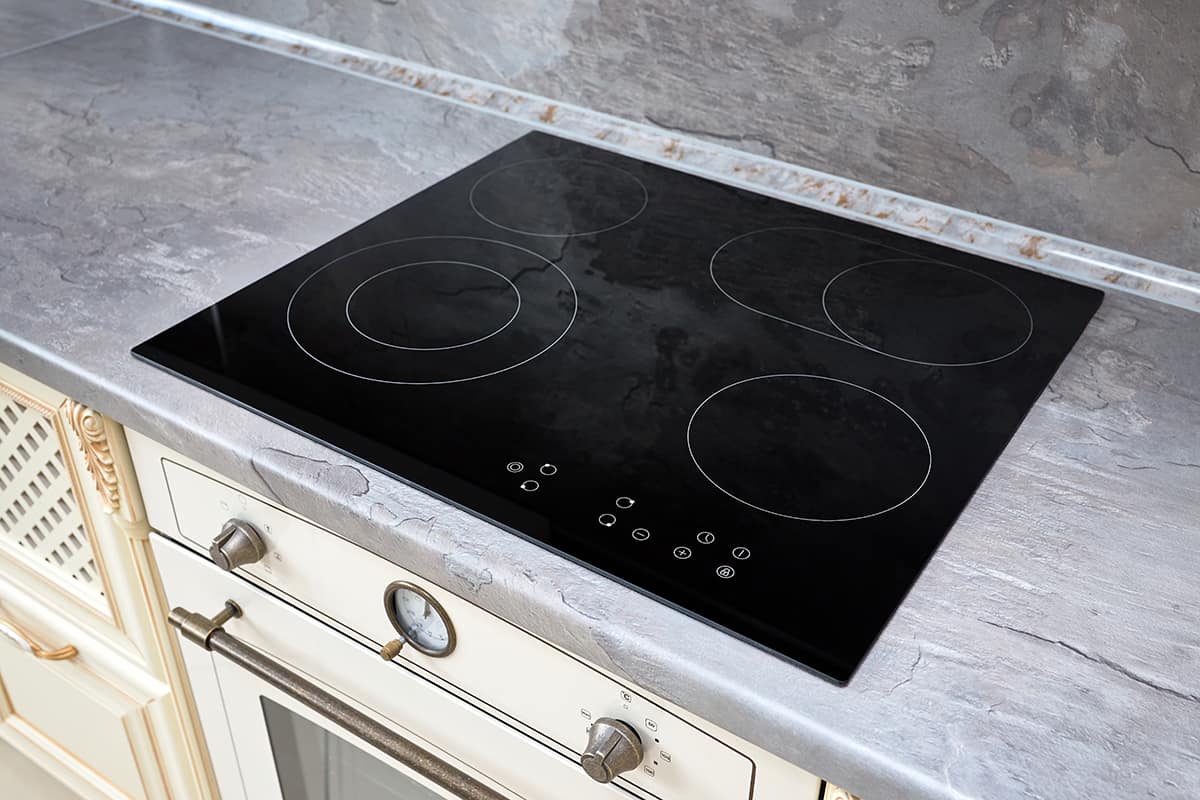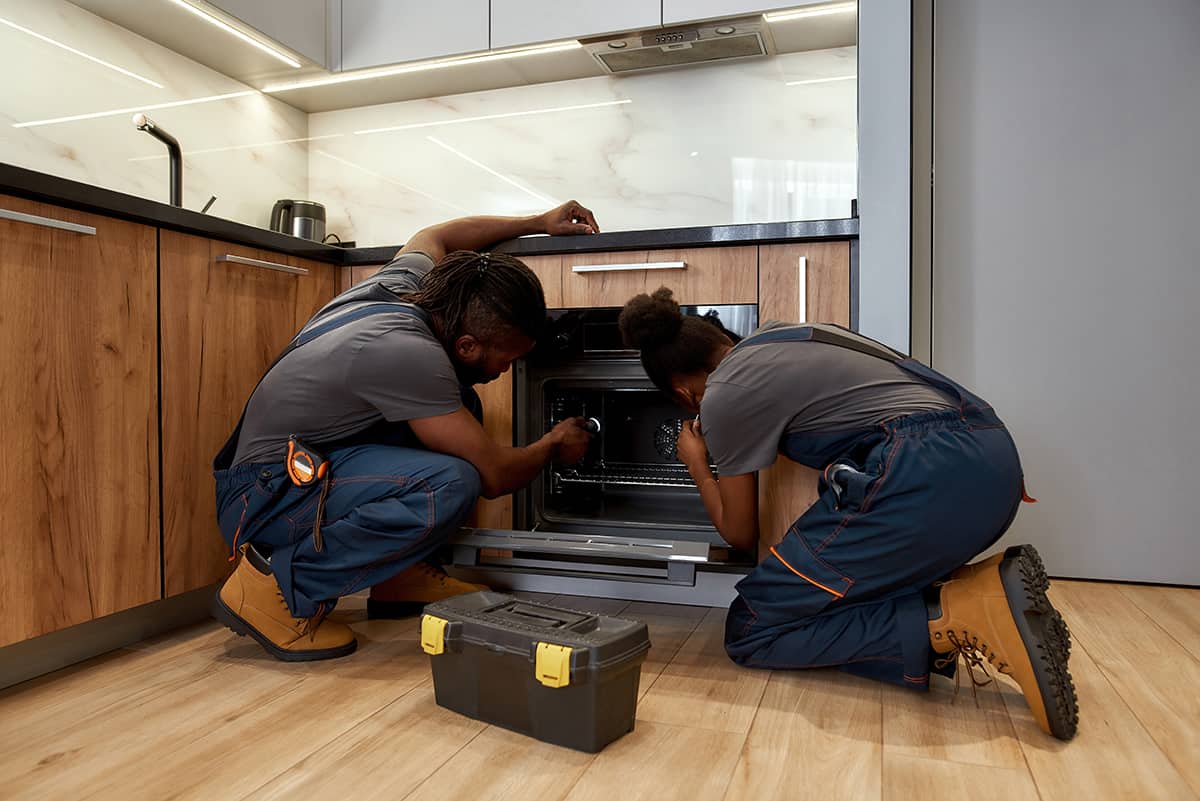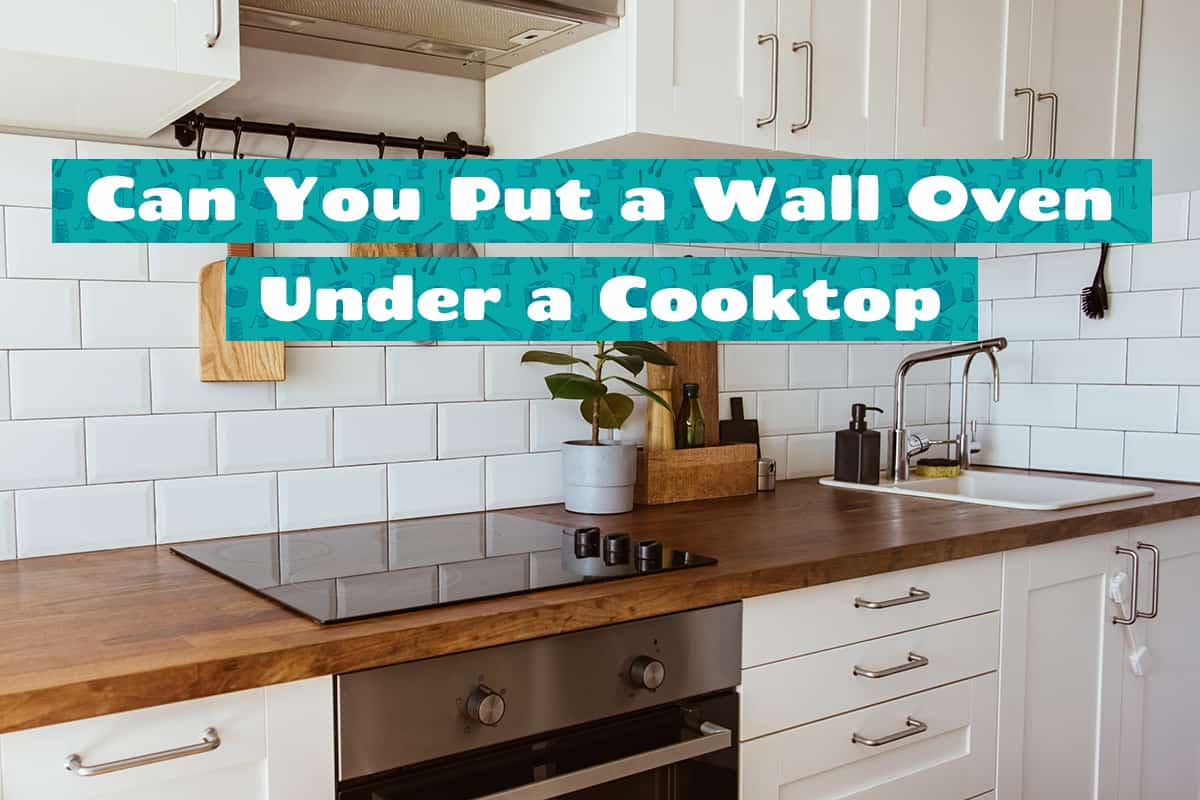The cooktop or oven is at the heart of any home kitchen, where delicious meals are prepared, and memories are made. However, with evolving design trends and the constant quest for maximizing space, you may wonder about the feasibility of unconventional kitchen setups. For instance, is it possible to install a wall oven underneath a cooktop?
Yes, with proper compatibility, heat dissipation, and installation, you can install a wall underneath a gas or electric cooktop. Most manufacturers recommend a distance of at least 32 inches above your kitchen floor, though this is for convenience rather than safety.
Today, we’ll explore the nuances of placing wall ovens and cooktops relative to each other. We’ll learn about the advantages, disadvantages, and safety aspects and alternative kitchen designs.
Pros and Cons of Placing a Wall Oven Under a Cooktop

There are both proponents and opponents of this kitchen setup, each with valid arguments. Let’s see what they are to give you a better idea of what you’ll face.
Advantages
- Space Efficiency: Wall ovens and cooktops, as standalone units, can take up considerable kitchen real estate. You can reclaim space and possibly create additional storage or countertop areas by placing them together. This setup also gives you more flexibility in your kitchen layout.
- Aesthetic Appeal: Combining a wall oven and a cooktop into one unit can create a sleek and modern kitchen aesthetic. This layout can create clean lines and a streamlined look, especially when you choose appliances that complement each other in style and design.
Disadvantages
- Heat Issues: Heat dispersion is key when installing a wall oven under a cooktop. Both appliances generate heat, which could potentially cause overheating if not properly managed. Overheating can lead to performance issues or even damage to the appliances. To mitigate this, you need to ensure proper ventilation and possibly additional insulation between the two appliances.
- Maintenance and Repair: Another potential disadvantage involves maintenance and repairs. If one appliance breaks down, it could impact the other’s usage, especially if the malfunction affects the unit’s shared housing or electrical system (extremely rare).
Alternative Kitchen Designs
The combination of a wall oven and a cooktop isn’t the only way to maximize kitchen functionality and style. Other layout alternatives can equally enhance your cooking experience while adding aesthetic appeal.
1. Side-by-Side Ovens and Cooktops
The side-by-side configuration of wall ovens and cooktops is popular among homeowners. This arrangement offers clear separation between the two appliances, minimizing heat-related issues and making simultaneous use easier.
- Convenience and Comfort: Placing the cooktop and wall oven side by side offers excellent ergonomic benefits. You don’t have to bend down as often, making your cooking experience more comfortable and enjoyable.
- Versatility in Cooking: With a wall oven and cooktop side by side, you can cook multiple dishes simultaneously. You could have a stew simmering on the cooktop while a roast cooks in the oven.
- Easier Maintenance: Since the wall oven and cooktop are separate in this setup, maintenance and repairs are less likely to disrupt both appliances. If one needs servicing, you can still use the other.
2. Island Cooktops and Wall Ovens
Kitchen islands with built-in cooktops are a rising trend in modern home design. When paired with a wall oven installed in a different part of the kitchen, this layout offers many benefits.
- Enhanced Workflow: With a cooktop on the island, you can cook while facing your family or guests. This arrangement can make your kitchen more social and inviting. Meanwhile, the wall oven can be installed closer to your prep or storage area.
- Increased Counter Space: The kitchen island can double as prep space, giving you more room to chop, mix, or assemble dishes. And since the wall oven is separate, it doesn’t eat up valuable counter space.
- Distinct Design Element: A kitchen island with a cooktop can serve as a statement piece, drawing attention and serving as the kitchen’s focal point. Your wall oven, meanwhile, can be seamlessly integrated into your cabinetry for a sleek, clean look.
Tips on Proper Installation and Maintenance

Whether you decide to install a wall oven under a cooktop, side by side, or opt for an alternative design, proper installation and maintenance of your kitchen appliances are key to ensuring their longevity and optimal performance.
1. Measure Everything Before Settling on a Kitchen Layout
The main reasons for putting a wall oven under a cooktop are convenience and appeal. Before you invest in such a kitchen setup, make sure that there’s enough space underneath your cooktop for a wall oven. Common wall oven sizes are 24-30 inches wide, 16 inches deep, and about 24 inches tall. You can opt for a larger or smaller wall oven, depending on how much space there is.
2. Hiring Professionals
There are three main reasons for outsourcing complicated installation jobs to the pros:
- Professional installers are trained to handle the risks associated with installing electrical appliances.
- Proper installation can prevent future issues related to performance and energy consumption.
- Professionals ensure that your installation meets local codes and manufacturer recommendations. This is important for protecting your appliances’ warranties.
3. Maintaining Your Appliances
Proper maintenance is essential to ensure your appliances serve you well over time. Here are some tips:
- Regular Cleaning: Keep your wall oven and cooktop clean. Spills and residue can impact their performance and can even pose fire risks. Use manufacturer-recommended cleaning solutions and techniques to avoid damaging your appliances.
- Inspection: Regularly inspect your appliances for any signs of wear or damage. Check for issues like uneven heating in the oven or problems with the cooktop’s burners. Early detection of potential issues can cause costly repairs.
- Servicing: Have your appliances serviced regularly by professionals. They can catch and fix problems you might not be aware of, helping to extend your appliances’ lifespan.
- Follow the User Manual: The user manual is your go-to guide for maintenance. It will provide specific guidelines based on your appliances’ models.
FAQs
1. Can a wall oven be installed under an induction cooktop?
Yes, a wall oven can be installed under an induction cooktop. In fact, due to its auto-shutoff feature, this may be preferable to installing a wall oven underneath a gas cooktop.
In rare cases, you may even find wall oven models with specific hooks or mounts that allow placing an electric stovetop immediately above it.
2. What are the safety precautions when having a wall oven under a cooktop?
- Proper Insulation: A cooktop can produce significant heat, which can affect the operation and lifespan of the wall oven underneath if not properly insulated. Install a heat barrier between the cooktop and the oven to protect the oven and ensure its longevity.
- Adequate Ventilation: Both a cooktop and an oven generate heat, which can build up if not adequately vented. Ensure there is enough ventilation around and between these appliances to dissipate heat and prevent overheating.
- Electrical Safety: These appliances require substantial electrical power. Ensure your home’s electrical system can handle the combined load of the oven and cooktop. Hiring a professional installer can ensure safe and code-compliant electrical connections.
- Clearance Space: Keep enough clearance around the oven and cooktop to avoid accidental burns. Ensure there’s no risk of flammable materials like curtains or towels coming into contact with these appliances.






